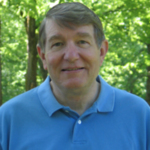Interviewee: George Brown
Interviewer: Max Geier
Interview Date: September 19, 1997
Location: Peavy Hall, Oregon State University
Duration: 1:56:06
George Brown began his engagements with the Andrews Forest in Summer 1964 digging soil pits, processing soil samples, and surveying, under the supervision of Forest Service scientists Jack Rothacher and Ted Dyrness. He began his PhD studies in Forest Engineering at OSU that Fall, and his academic career progressed through the ranks from assistant professor to full, to department chair, and on to Dean of the College of Forestry, so much of his involvement with the Andrews was administrative and supervisory. A crucial contribution was organizing workshops on “Logging Debris in Streams” in 1975 and 1977 at a time when that was a critical question for regulation of forest practices and the basic science of the International Biological Program era at Andrews Forest was focused on carbon and nutrient budgets in streams flowing through natural and managed stands. Those circumstances triggered the work on wood in streams for which the Andrews Forest is widely recognized.
Dublin Core
Title
George Brown Oral History Interview
Description
George Brown began his engagements with the Andrews Forest in Summer 1964 digging soil pits, processing soil samples, and surveying, under the supervision of Forest Service scientists Jack Rothacher and Ted Dyrness. He began his PhD studies in Forest Engineering at OSU that Fall, and his academic career progressed through the ranks from assistant professor to full, to department chair, and on to Dean of the College of Forestry, so much of his involvement with the Andrews was administrative and supervisory. A crucial contribution was organizing workshops on “Logging Debris in Streams” in 1975 and 1977 at a time when that was a critical question for regulation of forest practices and the basic science of the International Biological Program era at Andrews Forest was focused on carbon and nutrient budgets in streams flowing through natural and managed stands. Those circumstances triggered the work on wood in streams for which the Andrews Forest is widely recognized.
Source
H.J. Andrews Experimental Forest Oral History Collection (OH 28)
Publisher
Special Collections and Archives Research Center, Oregon State University Libraries
Identifier
oh28-brown-george-19970919

